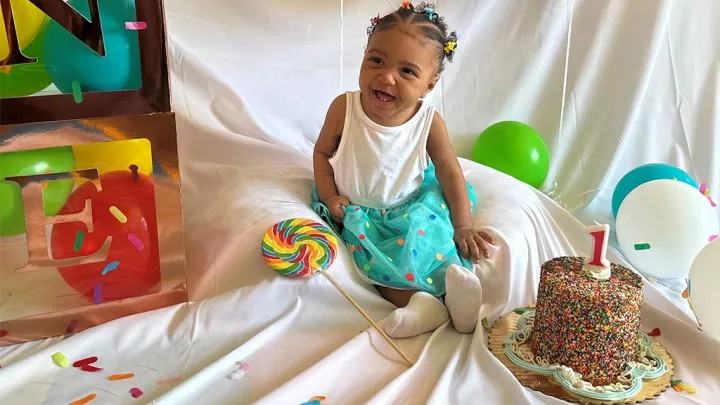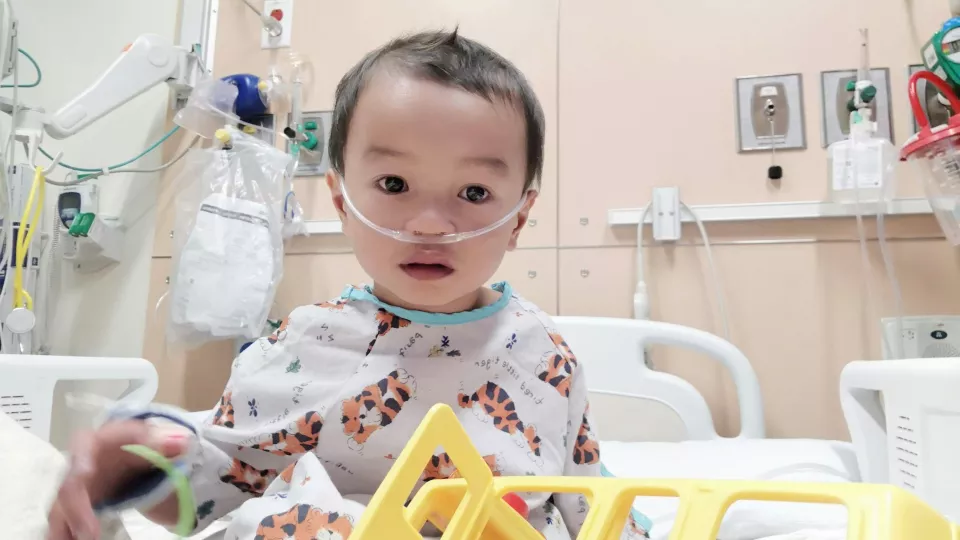
E.J., before his Fontan procedure
From Fetal Diagnosis to Fontan Procedure to Fun-loving Kid
Five months into an uneventful pregnancy for their second child, Marie and Noel received news from their obstetrician no parents want to hear—the latest scan looked as if something was seriously wrong with their unborn baby’s heart.
“We were pretty shocked, hoping it wasn’t true and the next ultrasound would show that,” Noel says. “There was definitely some denial, some shock and hope.”
Their obstetrician referred them to the Children’s Hospital Los Angeles Fetal Cardiology Program, part of the nationally ranked Heart Institute, where specialists have both the experience and technology to diagnose and treat the most complex neonatal heart defects.
Pediatric cardiologist Grace Kung, MD, performed a fetal echocardiogram. “At 20 weeks gestation, we can get a clear picture of the heart’s chambers, valves and arteries and the direction of blood flow,” she says.
What Dr. Kung saw confirmed the suspicions. Marie and Noel’s baby had a rare heart defect called pulmonary atresia with intact ventricular septum. In this condition, the pulmonary valve between the heart and lungs doesn’t form properly, or at all, and blood can’t flow normally from the heart’s right lower chamber (ventricle) to the lungs to pick up oxygen for the body.
About 1% of babies are born each year in the U.S. with a congenital heart defect. Pulmonary atresia is even more rare—it affects about 1% of that 1%, or 1 in 7,100 babies annually.
“We knew the road ahead would be difficult at times,” says Marie, “but Children’s Hospital was going to help us. They quickly developed a whole plan for us.”
Making a diagnosis in utero gives doctors a chance to strategize before birth. “It takes away any surprises, and we can prevent the baby from getting too sick,” says Dr. Kung.
CHLA’s fetal cardiology specialists collaborate with other experts across the Heart Institute, including world-class congenital heart surgeons, fetal surgeons, heart rhythm specialists, neonatologists and imaging specialists. “What sets CHLA apart is our collaborative work,” says Dr. Kung. “Every patient is discussed throughout their care.”
Welcome to the world
Marie gave birth to their 6-pound, 2-ounce baby boy next door to CHLA on Nov. 23, 2015.
The couple named him Emmanuel, his father’s actual first name—meaning “God with us.” They chose his middle name—Josiah—after learning about his heart disease. “Josiah means ‘Jehovah has healed,’” says Marie, “pretty much declaring the hope of healing over his life, however that healing comes.”
The right side of E.J.’s heart was smaller than the left—too small to do its usual job of pumping blood to the lungs. He would need a series of three surgeries called single-ventricle palliation to enhance his heart’s pumping capabilities.
Normally, a blood vessel provides a fetus with oxygenated blood in utero. The vessel closes soon after birth, but doctors gave E.J. medicine to keep it open. On day 2, they inserted a stent—a small, metal mesh tube—inside the vessel. “Instead of a direct route between the blood vessels to the body and the blood vessels to the lungs, it creates a detour,” says Dr. Kung.
E.J.’s recovery went smoothly until day 10. His oxygen saturation level plummeted to zero and his heartbeat slowed dangerously, then briefly stopped. Watchful CTICU nurses started chest compressions, and E.J. was rushed to the operating room for intervention on his atrial septum, a wall separating the heart’s upper chambers.
The incident illustrated something Marie and Noel quickly learned as parents of a baby with a heart defect: the times in between major surgeries could be scarier than the major procedures, says Marie.
They also learned to be careful monitors of their son’s health and idiosyncrasies. For example, sometimes E.J. simply held his breath, then started breathing normally again. Marie would assure nurses new to his bedside there was no need to panic.
Both parents were comforted by how closely the doctors, nurses and other team members listened to them. “Their knowledge and attentiveness really gave us peace of mind,” says Noel.
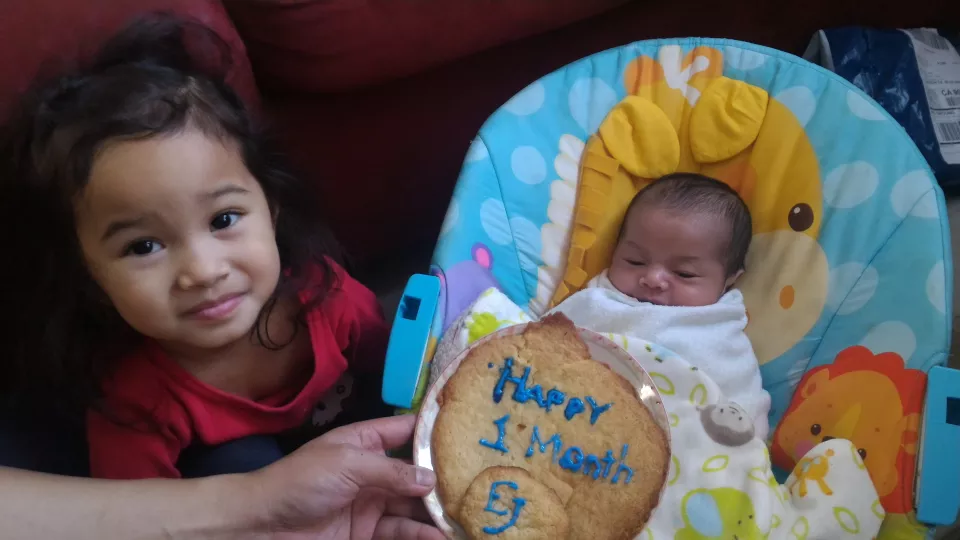
Just before Christmas, 1-month-old E.J. came home for the first time and met his big sister, Arabella, almost 3 years old. “She knew she had a brother,” says Marie, “but she wanted to see him for herself.”
The family returned to CHLA when E.J. was 5 months old for the Glenn procedure. Surgeons connected one of the large veins that returns blood to the heart to the pulmonary artery, while another vein kept blood flowing to the right side of the heart.
Since birth, E.J.’s oxygen saturation level had been consistently low, once dipping down to 33%, far below the desired 95% to 100%. Before the Glenn Procedure, his level averaged about 60% to 70%. Now it began rising. “He was very active, with a lot of energy,” Marie says.
Just before E.J.’s third birthday, he underwent the Fontan procedure. This time, cardiac surgeons rerouted his circulation so blood from the lower body went directly to his lungs, while high-oxygen blood went into the heart. Suddenly, E.J.’s oxygen levels jumped to 95%—finally within the healthy range.
Lifelong monitoring and care
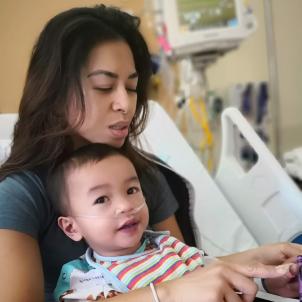
The number of Fontan surgeries that the Heart Institute performs annually is among the largest in the U.S. “Single-ventricle defects are challenging conditions to treat. Although they are quite rare, you wouldn’t know it coming to CHLA,” says Andrew Cheng, MD, who leads the multidisciplinary Fontan Program. “We see patients with this type of condition every single day.” The program helps troubleshoot potential complications for children with Fontan circulation, including problems with the liver, kidneys and lungs, along with learning disabilities and mental health problems.
When they visit the Fontan Program, families can see specialists from every key area in one visit as needed. The goal of this monitoring: early detection and treatment.
In February 2024, CHLA opened the Fetal Cardiac Clinic. This dedicated home for the Fetal Cardiology Program offers over 3,000 square feet and three scanning rooms for comprehensive care to expectant mothers and the fetal patient population during and after pregnancy. In addition to fetal echocardiograms, its advanced prenatal diagnostic tools include 3D/4D ultrasound, fetal magnetic resonance imaging and maternal hyperoxygenation testing.
E.J.’s journey continues
Above all, “we want these children with heart defects to be normal kids,” says Dr. Kung, who became E.J.’s primary cardiologist at his parent’s request. “We want them to play with other kids and go to school.”
E.J. returns regularly for checkups at CHLA, where he is a big fan of the therapy dogs, mobile library and playrooms, which Arabella also enjoys. A happy, busy 8-year-old, E.J. loves soccer, as well as jiu jitsu and basketball. He’s doing well in school, where his favorite subject is art. He sings in school performances and participates in piano recitals.
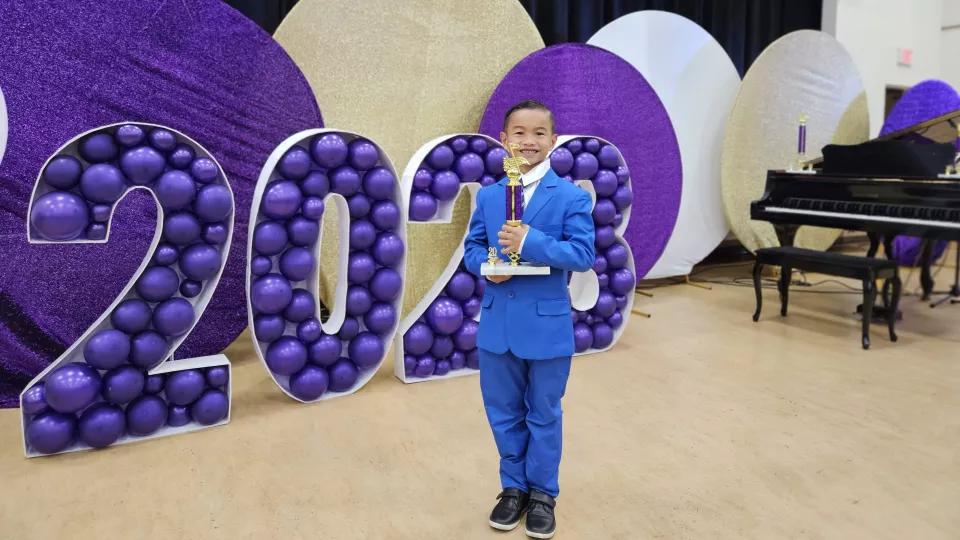
Marie and Noel started a scrapbook of the family’s experience labeled “E.J.’s Journey.” E.J. often looks through the book. He sometimes asks why he was born with a different kind of heart than his mom, dad and sister have, “but more out of curiosity,” Marie says. “He likes learning about his condition.”
E.J. calls CHLA “The Butterfly Hospital” for its iconic logo. It’s a symbol that also represents his own transformation into “normal kid.”

